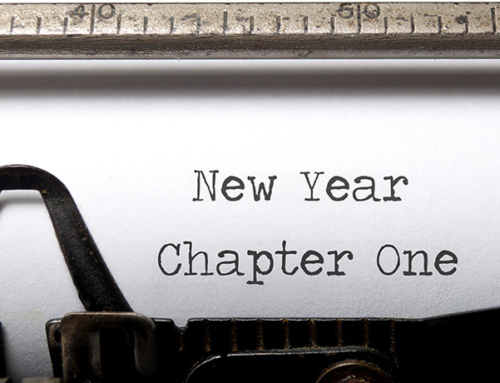In this second post in my Vocabulary of Hurt series, I cover self-disgust. Initially, you may think I’m diving too deep and exploring a rather esoteric emotion. I hope to change your mind by the end by highlighting its importance in depression, substance use disorders, eating disorders, borderline personality disorder, and many high-risk suicidal states.
Weekly Photo
See the mouse? Today’s photo is of a mural in Providence, RI by the artist known as Bezt – find his tag on the upper right. His real name is Mateusz Gapski and he currently lives in Gdynia, Poland, although he spends a lot of time traveling the world, often painting murals several stories high. He often collaborates with a fellow muralist, Sainer, and together they’re known as Etam Cru. They have a cool mural in Richmond, VA called Moonshine. If interested just search “etam cru.”
The emotion of disgust is present in many species and functions to keep organisms away from sources of disease and bodily contamination, such as from sick and dead animals, and rotting and rancid foods. Thus, unsurprisingly, the foundation of disgust’s meaning is “dis” and “gust” or “bad taste.” Disgust is experienced as a powerful feeling of nauseous revulsion related to the source of potential contamination and a behavioral urge to stay far away from it. Also, disgust is communicated by a characteristic facial expression you are surely familiar with and serves to warn other members of one’s group about the danger posed by a potential contamination threat.
Like some other emotions that evolved to keep our ancestors safe from physical sources of danger, disgust has been appropriated by humans to serve broader purposes, in particular in regulating interpersonal relations and moral behaviors. For example, it contributes to regulating an individual’s sexual behaviors, such as in minimizing incest, and moral behaviors, such as in minimizing abuse of children or animals. All you have to do is imagine some transgressive behaviors, related to the topics I mentioned above, to experience how effectively disgust keeps us from those behaviors: we’re revolted by thoughts of incest, and of child or animal abuse. (As an aside, it’s also fascinating to consider how quickly and thoroughly the triggers of disgust can change: how much more accepting society has become of different forms of sexual expression that may have been experienced as disgusting in earlier times, while intolerant of different forms of bigotry, which now trigger a sense of disgust whereas they were often considered acceptable until relatively recently.)
My topic today is narrower than disgust, however; it is self-disgust, that is, forms of disgust turned towards aspects of one’s self or even invading one’s core self. A person can be disgusted by one’s behaviors; one’s body or one of its aspects; or by one’s personality, intellect, interests, desires or other psychological aspects of self. And, importantly, a person’s sense of self-disgust can become all-permeating, a state in which one’s very core is considered revolting and unendurable.
The emotion of shame has as its basis self-disgust: the sufferer has come to believe and experience that the core self is not only unlovable, unfixable, and unworthy, but also as being revolting to one’s self and to others. Notice the self-reflexive nature of self-disgust: the self is revolting to itself. Of course, another aspect of shame is that the self fears exposure of the revolting self to others and, thus, seeks to avoid humiliating exposure to others at all costs. But although difficult, it is possible to hide one’s disgusting self from others; it is not possible to hide one’s disgusting self from one’s self.
Notice also how the moral aspect of self-disgust can contribute to the intolerability of the disgusting self to itself. The self experiences itself as morally disgusting, as tainted to its core by sin, and unredeemable. The language of self-disgust is often infused by religious terms and imagery. One of my patients once suggested to me that killing himself was the only way he knew to redeem himself in the eyes of God.
From what I’ve written, do you see the connection between self-disgust and suicide risk? Suicide is not caused by suicidal thoughts, plans, or intentions. Rather thoughts, plans, and intentions are the manifestations – and coping strategies, but that is a topic for a different day – of the underlying desires to kill one’s self; and one powerful source of these desires is self-disgust. Return for a moment to the foundation of disgust – the nauseous revulsion toward a potential source of contamination and the powerful urge to escape from its presence. If one has such a nauseous revulsion towards one’s self and such a powerful urge to escape from one’s self, what in the world can one do to accomplish that?
To die by suicide, of course!
Yes, suicide kills the observing self that is disgusted by the contaminated and shameful self. But since perpetrator and victim are in the same body and mind, there is seemingly no other solution to this dilemma. (In passing note that persons at truly high risk of dying by suicide have tried everything else they can think of to either escape from the disgusting self or to “decontaminate” it. Most individuals who suicide don’t do it on an initial whim but rather only after their mental anguish is experienced as unbearable, unresolvable, inescapable, and, thus, all-consuming and never-ending. I once had another patient tell me, “I’m a stain on the face of the earth. It’s best if I just took myself out.” The experience of the self-loathing I saw in his face has never left me.
Suicide risk is elevated across almost every single psychiatric disorder – only intellectual disability lowers suicide risk below the baseline population rate. There are different paths to suicide. One powerful risk factor is the presence of self-disgust, an emotion common in persons with depression, substance use disorders, eating disorders, borderline personality disorder and also narcissistic personality disorder when the grandiose self collapses into shame and self-disgust.
When you look for self-disgust, you will find it, and understand that person’s travails all the better.
Until next time,
Dr. Jack
LanguageBrief
Today’s Quotes
Thou canst not think worse of me than I do of myself.”
– Robert Burton, The Anatomy of Melancholy, published in 1621“I hate the thought that I’m just some kind of Russian nesting doll with the big outside and inevitably, rattling around under all the layers, a crude little peg with a face that is the truth of me.”
– Wendy McClure, I’m Not the New Me“Accomplishments don’t erase shame, hatred, cruelty, silence, ignorance, discrimination, low self-esteem or immorality. It covers it up, with a creative version of pride and ego. Only restitution, forgiving yourself and others, compassion, repentance and living with dignity will ever erase the past.”
– Shannon L. Adler







Leave A Comment